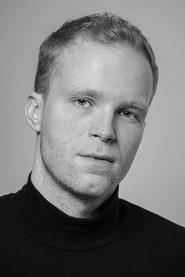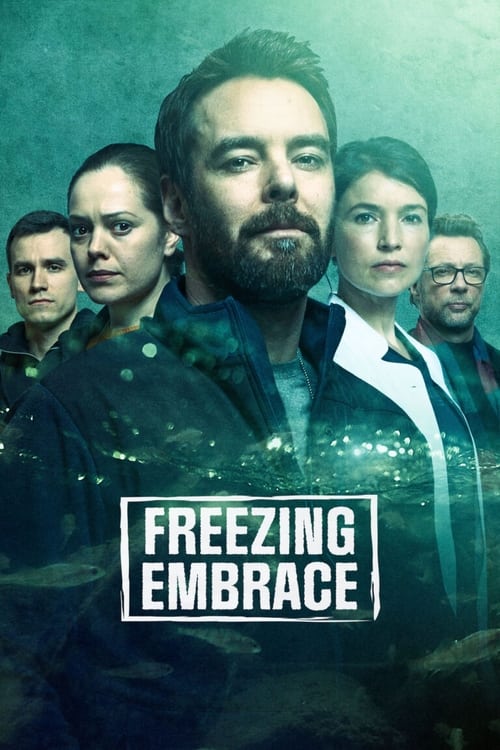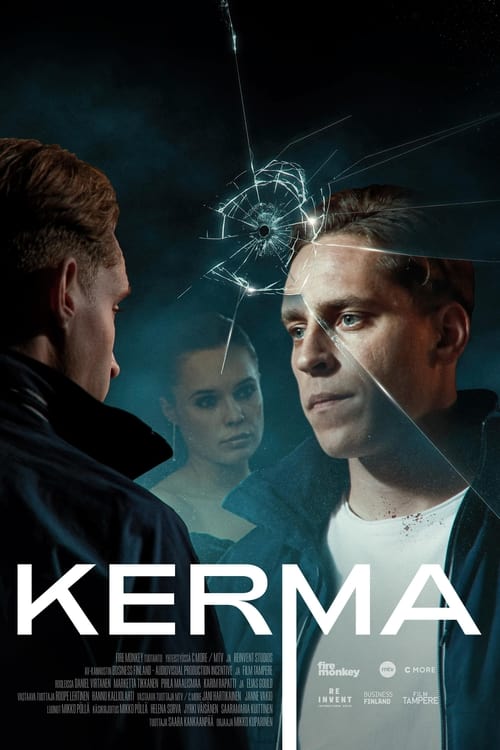
Ask Your Own Question
What is the plot?
In the opening scene of "In Good Faith Part 2," the tension is palpable as Detective Sarah Collins and her partner, Detective Mark Thompson, sift through the aftermath of the shocking murder that occurred in the previous episode. They stand in the dimly lit living room of the victim, a local philanthropist named Richard Hale, whose lifeless body lies sprawled on the floor. The detectives exchange grim looks, knowing that the case is more complex than it initially appeared. Sarah's determination to uncover the truth is evident as she examines the crime scene, noting the scattered papers and a broken vase, which suggests a struggle.
As they begin their investigation, Sarah and Mark interview Richard's wife, Evelyn Hale, who is visibly distraught. She recounts the events leading up to the murder, her voice trembling with grief. Evelyn mentions a heated argument she had with Richard the night before his death, revealing that he had been involved in a controversial charity project that had drawn criticism from the community. The detectives take note of her emotional state, sensing that she may be hiding something. Sarah's intuition tells her that Evelyn's grief may mask deeper motivations.
The scene shifts to the local community center, where Sarah and Mark meet with several members of the charity board that Richard was a part of. The atmosphere is tense as they discuss the project that Richard was spearheading, which aimed to revitalize the town but faced opposition from some residents. One board member, Tom, expresses his disdain for Richard's methods, hinting at a possible motive for murder. Sarah observes the dynamics among the board members, noting the underlying animosity and jealousy that simmers just beneath the surface.
Back at the precinct, Sarah and Mark analyze the evidence collected from the crime scene. They discover a threatening letter addressed to Richard, which raises alarms about the potential for foul play. The letter hints at a conspiracy involving several individuals who opposed Richard's charity work. Sarah's resolve strengthens as she realizes that the case is not just about a single murder but may involve a larger web of deceit and betrayal. She decides to dig deeper into Richard's past, hoping to uncover any connections that could lead them to the killer.
The detectives then visit the local bar where Richard was known to frequent. They speak with the bartender, who reveals that Richard had been seen arguing with a man named Greg, a disgruntled former employee of the charity. The bartender describes Greg as volatile and resentful, suggesting that he may have had a motive for wanting Richard dead. Sarah and Mark decide to track down Greg, believing he could be a key suspect in the case.
In a dramatic turn of events, Sarah and Mark locate Greg at his rundown apartment. When they confront him, he becomes defensive and aggressive, denying any involvement in Richard's murder. A heated exchange ensues, with Greg accusing Richard of ruining his life. As tensions escalate, Greg suddenly lunges at Mark, leading to a physical confrontation. Sarah intervenes, and after a brief struggle, they manage to subdue Greg and take him into custody. The encounter leaves Sarah shaken but more determined than ever to solve the case.
Back at the precinct, Sarah interrogates Greg, who continues to deny any wrongdoing. However, during the questioning, he inadvertently reveals details about Richard's charity project that only the killer would know. This slip of the tongue convinces Sarah that Greg is hiding something crucial. She presses him further, and under the weight of her relentless questioning, Greg finally admits to being at the scene of the crime but insists he did not kill Richard. He claims he was there to confront him about the charity's mismanagement.
Meanwhile, Sarah receives a tip-off about a secret meeting involving the charity board members. She and Mark decide to attend, hoping to catch them discussing their plans. At the meeting, they overhear heated discussions about how to handle the fallout from Richard's death. One board member, Linda, is particularly vocal, suggesting that they should distance themselves from the charity to avoid any negative publicity. Sarah's instincts tell her that Linda knows more than she is letting on.
The episode reaches its climax when Sarah confronts Linda at her home, demanding answers about Richard's murder. Linda initially feigns ignorance but eventually breaks down, revealing that she had been in a secret relationship with Richard. She admits that their affair had turned sour, and she feared that Richard would expose her involvement in the charity's financial discrepancies. In a moment of desperation, Linda confesses that she was present when Richard was killed, but she insists that she did not pull the trigger.
As the episode draws to a close, Sarah receives a call from Mark, who has uncovered new evidence linking another board member, Tom, to the murder weapon. The final scene shows Sarah racing against time to confront Tom before he can flee the town. The screen fades to black, leaving viewers on the edge of their seats, eager to see how the investigation will unfold in the next episode.
What is the ending?
In the ending of "Lakeside Murders" Season 2, Episode 2, titled "In Good Faith Part 2," the investigation reaches a climax as the truth about the murders is unveiled. Detective Sarah and her team confront the main suspect, leading to a tense standoff. The episode concludes with the resolution of the case, revealing the motivations behind the crimes and the emotional toll on the characters involved. The community begins to heal, but the scars of the events linger.
As the episode unfolds, the tension escalates in the small lakeside town. The scene opens with Detective Sarah standing in the dimly lit interrogation room, her brow furrowed with determination. She faces the main suspect, a local man named Tom, whose demeanor shifts from defiance to vulnerability as the evidence mounts against him. Sarah's voice is steady, but her heart races as she lays out the timeline of events, connecting the dots that lead to Tom's involvement in the murders.
Cut to a flashback sequence that reveals Tom's troubled past, showcasing his struggles with addiction and the loss of his family. The audience sees him in moments of despair, which adds layers to his character and explains his motivations. The emotional weight of his choices hangs heavy in the air, and the audience can feel the conflict within him as he grapples with guilt and desperation.
Back in the present, Sarah's partner, Detective Mark, stands watch outside the interrogation room, his expression a mix of concern and resolve. He knows that the truth must come out, but he also feels the burden of the community's expectations weighing on him. The camera captures the tension in his clenched fists as he waits for Sarah to extract a confession.
As the confrontation intensifies, Tom finally breaks down, revealing the truth about the murders. He confesses that he acted out of a misguided sense of loyalty to protect someone he loved, but his actions spiraled out of control. The emotional release is palpable, and Sarah's expression softens as she realizes the depth of Tom's pain. This moment of vulnerability highlights the complexity of human emotions and the consequences of choices made in desperation.
The scene shifts to the town square, where the community gathers for a vigil in memory of the victims. The atmosphere is somber yet hopeful, as townsfolk light candles and share stories of those they lost. Sarah and Mark stand at the edge of the crowd, reflecting on the impact of the case on their lives and the lives of the townspeople. They exchange a knowing glance, acknowledging the weight of their work and the healing that must follow.
In the final moments, the camera pans over the faces of the community, capturing the resilience and strength that emerges from tragedy. Sarah and Mark walk away from the vigil, their silhouettes framed against the setting sun, symbolizing a new beginning for both the town and themselves. The episode closes with a sense of closure, yet the lingering questions about morality and justice remain, leaving the audience to ponder the complexities of human nature.
As the credits roll, viewers are left with a bittersweet feeling, understanding that while the case has been solved, the emotional scars will take time to heal. Each character's fate is intertwined with the events that transpired, and the community's journey toward recovery is just beginning.
Is there a post-credit scene?
In "In Good Faith Part 2," the second episode of season 2 of Lakeside Murders, there is indeed a post-credit scene that adds an intriguing layer to the narrative.
As the credits roll, the screen fades back in to a dimly lit room, revealing a cluttered desk strewn with papers and photographs. The camera slowly pans across the surface, highlighting a series of images that depict various locations around Lakeside, each marked with red circles and notes scribbled in the margins.
The focus shifts to a shadowy figure seated at the desk, their face obscured by the low light. They are intently studying the photographs, a look of determination etched on their features. The tension in the air is palpable as the figure picks up a particular photo of a seemingly innocuous location--a local park--and stares at it, deep in thought.
Suddenly, a phone rings, breaking the silence. The figure answers, and a muffled voice on the other end speaks urgently. The figure's expression shifts from concentration to alarm, and they quickly jot down a note, their hand trembling slightly.
As the conversation continues, the camera zooms in on the figure's hand, revealing a ring with a distinctive emblem--a symbol that has been associated with a secretive group mentioned throughout the season. The scene ends with the figure hanging up the phone, a look of resolve crossing their face as they stand up and head towards the door, leaving viewers with a sense of impending danger and intrigue.
This post-credit scene effectively sets the stage for future conflicts and deepens the mystery surrounding the ongoing investigation, leaving the audience eager for the next episode.
How does the episode explore the theme of trust among the characters?
In 'In Good Faith Part 2', trust becomes a critical theme as characters grapple with their loyalties. Tensions rise when a key witness is revealed to have a questionable past, causing the detectives to reassess who they can rely on. This internal conflict is vividly portrayed through heated discussions and moments of doubt, particularly for Sarah, who must reconcile her instincts with the evidence presented.
What role does Detective Sarah Collins play in the investigation during this episode?
In this episode, Detective Sarah Collins takes a central role in unraveling the complex web of deceit surrounding the murder case. Her determination is palpable as she navigates through conflicting testimonies and uncovers hidden motives among the suspects. Sarah's emotional state fluctuates between frustration and resolve, particularly when she confronts the suspects, pushing them to reveal their secrets.
How does the relationship between Detective Mark Thompson and Sarah Collins evolve in this episode?
Throughout 'In Good Faith Part 2', the dynamic between Detective Mark Thompson and Sarah Collins deepens. Initially, there is tension as they disagree on investigative approaches, but as they face mounting pressure from the case, they begin to rely on each other's strengths. Mark's protective instincts surface, especially when Sarah faces danger, showcasing a blend of professional respect and personal concern.
What significant clue does the team discover that changes the direction of the investigation?
A pivotal moment occurs when the team discovers a hidden diary belonging to the victim, which contains cryptic entries about a secret relationship. This revelation shifts the investigation's focus, leading them to explore the victim's personal life more deeply. The emotional weight of the diary's contents adds layers to the narrative, revealing the victim's struggles and the potential motives of those close to her.
What emotional impact does the resolution of a subplot involving a family member of the victim have on the main characters?
The resolution of the subplot involving the victim's estranged sibling brings a heavy emotional toll on the main characters. As they witness the sibling's grief and anger, it forces Sarah and Mark to confront their own feelings about loss and justice. The scene is charged with raw emotion, highlighting the personal stakes of the investigation and leaving a lasting impact on their motivations moving forward.
Is this family friendly?
"Lakeside Murders" Season 2, Episode 2, "In Good Faith Part 2," contains several elements that may not be suitable for children or sensitive viewers.
-
Violence and Crime: The episode revolves around a murder investigation, which includes discussions of violent acts and the aftermath of crime scenes. This may be distressing for younger viewers.
-
Emotional Turmoil: Characters experience intense emotional states, including grief, anger, and fear, which may be upsetting for sensitive audiences.
-
Themes of Betrayal and Trust: The narrative explores complex themes of betrayal within relationships, which could be difficult for some viewers to process.
-
Mature Language: There may be instances of strong language or adult conversations that could be inappropriate for younger audiences.
-
Tense Situations: The suspenseful nature of the investigation can create a sense of anxiety, which might be overwhelming for children or those who are sensitive to tension.
These aspects contribute to a darker tone that may not be suitable for all viewers, particularly younger children.



































